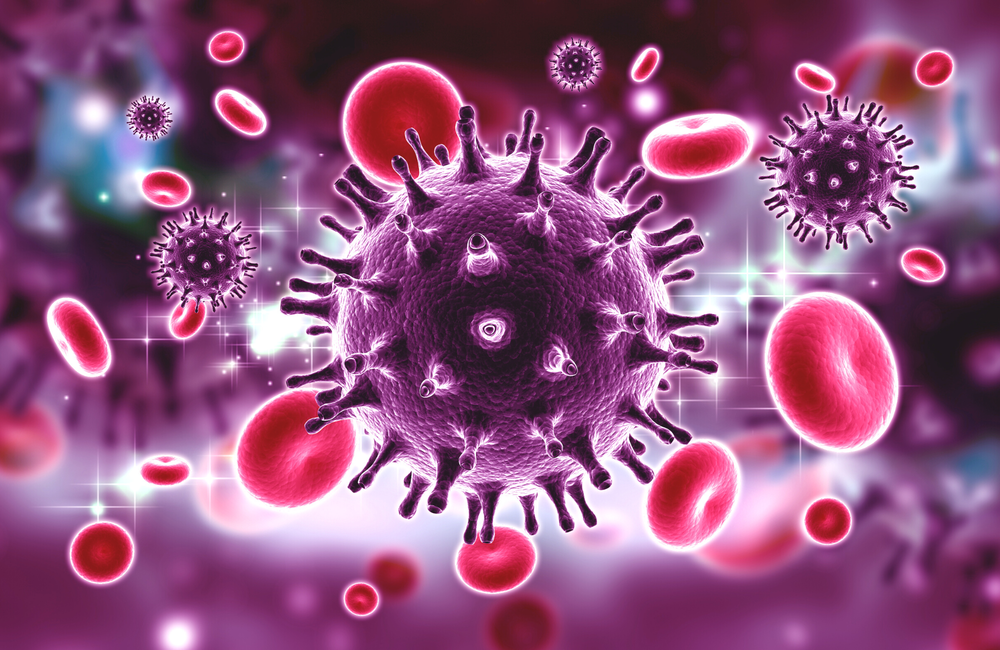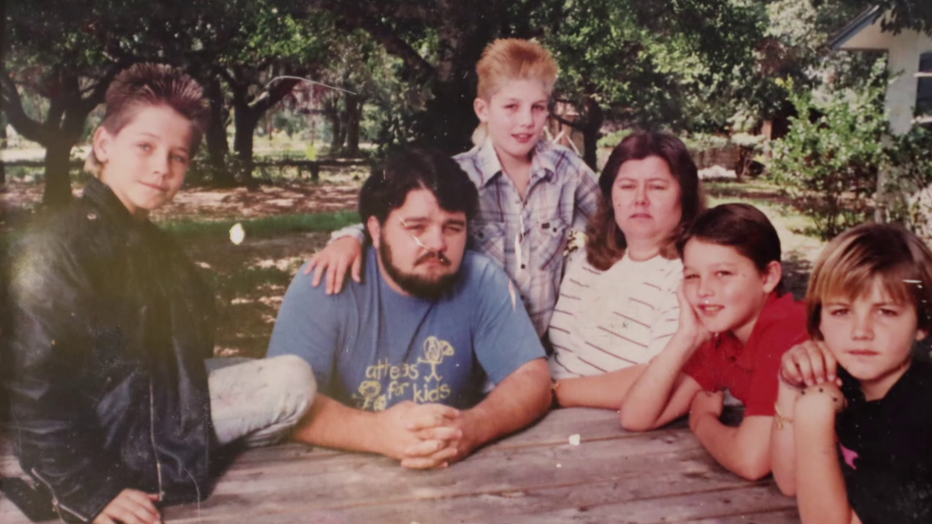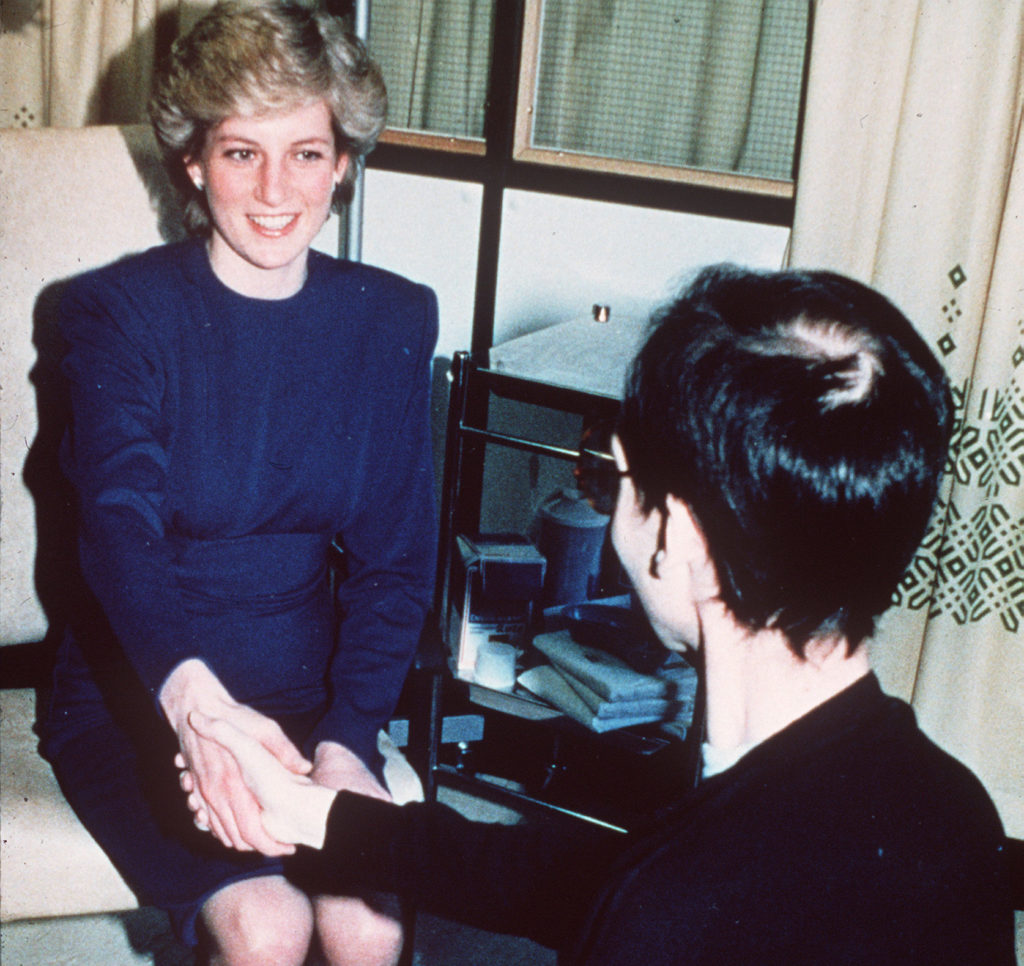Definition
HIV is Human Immunodeficiency Virus. The HIV virus attacks CD4 T cells in the immune system, which are essential for fighting off disease and infection in the body. HIV is a retrovirus that enters into cells and into the human genome. It does this by using an enzyme called reverse transcription to convert the HIV RNA into a complementary DNA strand which is then inserted into the genome of the host cell. Thus, anytime an infected cell is replicated the new cell will also contain the HIV. Therefore, if a person contracts HIV, they will have it for life. The HIV genes destroy the CD4 White Blood Cells and as a result, weakens the immune system. When a person initially contracts the virus, symptoms might not present for a while. However, during this time the virus is replicating in the body. While the virus is reproducing in cells, the body responds by creating antibodies to fight against the infections. Thus, the primary symptoms exhibited are similar to those of a common flu. During this time, HIV can be transmitted from one person to another, and the only way to confirm a diagnosis is to get tested. While there is no cure for HIV, there are treatments to manage it. Without treatment, HIV can progress to Acquired Immune Deficiency (AIDS), the most extreme form of the disease. AIDS is characterized by extremely low levels of CD4 White Blood Cells, which make it very challenging for the immune system to fight off infections. The most common means of transmission of HIV is anal sex and sharing needles for injection. As a result, male homosexuals and intravenous drug users are two groups that are most vulnerable to HIV, and therefore the disease has been severely stigmatized.

History/Background
The first ever confirmed case of HIV was in 1959 from a man in the Democratic Republic of Congo. It is believed that HIV came to the United States in the late 1970s. In 1981, the CDC reported in an article that five gay men in Los Angeles all had rare infections called Pneumocystis Carinii Pneumonia that was affecting the immune system. At the same time, Kaposi Sarcoma was also spreading amongst the gay community. Because both these diseases were affecting gay men, it was thought early on that the disease was spread through sexual contact. It wasn’t until almost a year later that the New York Times first wrote an article relating to the rare disease. During this time, AIDS was known as GRID or Gay Related Immune Deficiency. This was one of the first names that was used to describe the disease, and it severely impacted how HIV was viewed for many years to follow. AIDS was also termed the “gay plague” by the public, because it spread rapidly amongst the gay community. In September of 1982, the CDC first used the term AIDS to describe the disease that was attacking people’s immune systems. AIDS stands for Acquired Immunodeficiency Syndrome. Acquired means that the disease is not genetic and you can contract the disease after birth. Immunodeficiency describes that the disease attacks the immune system – specifically the CD4 T cells which results in a weakened immune system. In March of 1983 the CDC announced that the communities that were most at risk for contracting AIDS are gay men, intravenous drug users, and those with hemophilia because AIDS is transmitted through sexual contact and contaminated blood. Because of the types of communities that were contracting AIDS, there was an extreme stigma surrounding the disease. Straight men and women did not believe that they should care about the AIDS because they thought that it did not affect them. Homophobia led to the public not caring about the death of so many gay men who were affected by AIDS, and as a result, there was very little motivation to invest money into research of the AIDS and HIV. It wasn’t until infants started contracting AIDS that the public began to realize how threatening this disease was. Very early on, in 1983, the CDC announced that HIV could not be transmitted through casual contact – such as by air or surfaces. Despite this declaration by medical professions, it did not combat the fear of HIV positive patients. The public wanted those who tested positive for HIV to be put in isolation because they were scared to even be in the same vicinity as them. In 1985, Rock Hudson announced that he was HIV positive. Hudson was a famous actor in Hollywood and was the first celebrity to publicly announce their diagnosis. After Hudson’s HIV positive status was made public, there was a considerable increase of stories about HIV in the news. For example, the story of Ryan White, a young boy with hemophilia, who contracted HIV from a contaminated blood transfusion and was prohibited from attending his school because of his diagnosis made headlines. Almost five years after AIDS had come to the United States, President Ronald Reagan made his first mention of AIDS. It was very telling that the President had stayed silent about the epidemic until 1985. In 1986 there was a big movement for programs educating about safe sex practices. In addition to educating about the disease, there were also movements to try to combat the stigma surrounding HIV and AIDS. In 1987, the CDC approved the first medication that could be used as a treatment for HIV. The medicine worked by stopping the virus from multiplying in the cells. In 1988, December 1 was declared World AIDS day. By this time over 400,000 people had been infected with AIDS around the world. In the early 1990s many celebrities began to announce their HIV positive status which helped to destigmatize the disease. In 1995, the amount of deaths due to AIDS finally began to decrease after new medications were produced to fight the disease. Since the start of the HIV and AIDS epidemic, around 86 million people have contracted the disease. There is still no cure for the AIDS, but there are several treatments and therapies that can make HIV virtually undetectable. While huge progress has been made, HIV continues to affect the lives of millions of people around the world and countless scientists continue to work endlessly to find a cure for the disease.
Examples
Richard, Robert, and Randy Ray all suffered from hemophilia – a condition in the blood that prevents it from clotting normally. As a result, the Ray brothers were receiving treatments of blood transfusions in order to mediate the effects of the disorder. Unfortunately, in 1987 when the boys were only 10, 9, and 8 years old, a contaminated blood transfusion from an HIV-positive blood donor resulted in the infection of all three brothers, and all three boys developed AIDS. The Ray family faced extreme hatred and were ostracized from their community as a result of the stigma around HIV being known as the “gay disease.” When the school administration learned that the Ray brothers were HIV positive, they were prohibited from attending school. When the Ray parents took the school to court and won, the family faced even more backlash, such as death threats and hate speech, including statements telling them to leave town. As a result of the discrimination that the family faced they were staying at a family member’s house in an attempt to limit the harm that they would experience. However, in August, their house was set on fire, but luckily the family was staying elsewhere. After this event, the Ray family moved, leaving their home and the community that they used to be accepted in before the brothers’ diagnosis. Two of the brothers died at a very young age due to AIDS-related illness. The misinformation and stigma surrounding HIV and AIDs destroyed the Ray family’s lives.

In 1991, Everardo Mariscal was employed at Torrance factory working to manufacture equipment for racecar drivers. For five years, Mariscal worked at this facility, but one day everything changed. Mariscal appeared on a newscast where he was discussing the immigration policy in the United States that prohibited those with HIV from entering into the country. In discussing his opposition to the immigration policy, Marsical mentioned that he had recently tested positive for HIV. When Mariscal went to work the following morning, within just a few minutes of his arrival, Mariscal was informed by management that he had been put on paid leave. Management had told Mariscal that some of his coworkers saw the news broadcast and did not want to work with him anymore. However, 8 years earlier, the CDC announced that transmission of HIV was not possible by casual contact including through air and environmental surfaces. Despite medical professionals declaring that people did not have to be worried about being exposed to the disease by simply sharing common spaces, Mariscal was still a victim of the stigma surrounding HIV. Mariscal did not exhibit any symptoms of HIV and thus he was still able to work to his full capacity. Before news of Mariscal’s diagnosis was publicized, management seemed to have no problem with his work, thus proving unequivocally that Mariscal was not fired due to his ability to complete his work, rather because people feared being around him because of the stigma around the disease.

Up until 2012 Alabama prisons segregated HIV positive prisoners from other prisoners. This practice was justified because of the facility’s concern for the safety and well-being of both staff and inmates. It appeared that the way the inmates were treated during their time in prison was highly determined by whether they were HIV positive or not. Albert Knox first found out about his HIV positive diagnosis in prison, at which point he was immediately isolated from the other prisoners and transferred to a HIV positive facility. At these facilities, inmates were forced to wear very prominent white armbands indicating their HIV positive status. HIV positive prisoners were treated significantly differently than other prisoners. HIV positive prisoners were denied entrance into most rehabilitative programs. Those prisoners with mental health or substance abuse problems were provided treatment programs to help them, but most HIV positive prisoners could not enter these programs. Knox was fortunate that he was able to participate in a substance abuse treatment program despite being an HIV positive prisoner. Through this program was the only time that Knox was able to interact with prisoners who were not HIV positive; however, after the program meetings they could not eat together and were required to return to their segregated living unit. One day when Knox ate lunch with his non HIV positive friends from the program, he was caught and put in solitary confinement for nearly a month. Additionally, the entire prison facility was put on lockdown because the guards had to find the utensils that Knox had used to dine, even though medical professionals had proven that the disease was not transmittable through those means. HIV positive prisoners were also denied the ability to participate in supervised work, which was an excellent program for prisoners to earn money for when they get out of prison and learn skills to help them in their transition back into society. Prisons were misinformed and lacked knowledge about HIV. As a result, HIV positive inmates were subject to prejudice and dehumanizing treatment.

Breaking the Stigma
April 19, 1987 marked an important day in breaking the stigma of HIV and AIDS. Princess Diana paid a visit to Middlesex Hospital in London where she had opened the first unit that was specialized in treating HIV patients in the United Kingdom. When Princess Diana came for her visit to the hospital, all of the patients hid out of fear because they didn’t want to be seen on camera. However, Princess Diana was kind and warmhearted when she talked to the nurses and staff of the HIV unit, and one patient agreed to meet with her. Princess Diana talked to the HIV positive and a picture was captured of her shaking his hand without wearing gloves, demonstrating that she was not afraid of touching patients who were HIV positive. Even though in 1983 the CDC declared that HIV could not be transmitted through casual contact, the media misled the general public to believe that they should avoid coming into physical contact with HIV positive patients. Most people wanted people with HIV to be quarantined and isolated from the general public. Princess Diana’s simple act changed how the public viewed people with HIV. They saw a royal princess shaking hands with a person with HIV, so if she could do it, so could everyone else. After this act, HIV patients gained hope and slowly they started to be treated with more respect. Princess Diana’s work did not stop there. She worked closely with the National AIDS trust and worked to inform people about the disease. Princess Diana was critical in educating people that HIV was not a “gay plague.” Even after her death, the impact from Princess Diana continued through her children. Prince Harry continued to educate the public and work to destigmatize HIV. Prince Harry was shown taking a HIV blood test to demonstrate how easy it was to do, and by doing so, made it a more socially acceptable act. Princess Diana demonstrated that people with HIV were not dangerous and transformed the lives of HIV patients in the future.

On November 7, 1991 NBA superstar Earvin “Magic” Johnson shocked the world at a press conference when he announced that he had tested positive for HIV, and subsequently announced his retirement from basketball. The reporters immediately had questions and thought that Johnson’s life would soon come to an end; However, throughout the press conference Johnson remained positive, declaring that he would continue to live his life. Johnson recognized that the public was extraordinarily misinformed about the virus, and thus committed to educate the public about HIV. Magic Johnson played in the NBA for 13 seasons as a point guard, and led the Lakers to five championships. Magic Johnson was admired in the NBA and was considered one of the best players to ever play. Having such an important figure tell the world about his HIV positive status had immediate effects on how the disease was viewed and resulted in more compassion for HIV patients. Johnson’s diagnosis made it clear to the public that HIV was not a disease that just gay men could contract. Johnson had contracted HIV from unprotected sex. Just days after Johnson announced his diagnosis, the amount of people who were getting tested for HIV rose exponentially. Johnson also participated in advocacy work. He first joined the National Aids Commission under President George W Bush; however, after feeling like his work in the commission was being ignored, Johnson quickly and publicly quit. He established the Magic Johnson Foundation with the goal of raising greater awareness about HIV. Johnson donated millions of dollars and spent countless hours putting pressure on Congress to allocate the much needed funding into research for the disease. Johnson also increased the dissemination of information about new treatments for AIDS. Johnson was put on a strict regimen of three different drug therapies resulting in his HIV being completely undetectable. Johnson demonstrated that you could have HIV and still live a healthy life, and that being diagnosed with HIV did not mean inevitable death from the disease. Additionally, Johnson illustrated that HIV could not be easily transmitted through contact. When Johnson was chosen to play in the 1992 NBA All-Star game, even after announcing his retirement, some of the players feared transmission of HIV through sweat. However, in the game NBA star Dennis Rodman defended Johnson like he normally would, proving to the public that he was not afraid of casual contact with someone who was HIV positive. Magic Johnson played a significant role in dispelling the stigma surrounding HIV, leading to a more informed and compassionate world.

Works Cited
Anthony, Andrew. “‘We Were so Scared’: Four People Who Faced the Horror of AIDS in the 80s.” The Guardian, Guardian News and Media, 31 Jan. 2021, www.theguardian.com/society/2021/jan/31/we-were-so-scared-four-people-who-faced-the-horror-of-aids-in-the-80s.
Gomez, Miguel. “Timeline of the HIV and AIDS Epidemic.” HIV.Gov, www.hiv.gov/hiv-basics/overview/history/hiv-and-aids-timeline/. Accessed 12 Oct. 2023.
Green, Ian. “How Princess Diana Challenged HIV Stigma with Every Hug .” Terrence Higgins Trust, 30 June 2021, www.tht.org.uk/news/how-princess-diana-challenged-hiv-stigma-every-hug.
Herbert, Rory. “The Homophobic Response to the AIDS Crisis in the 1980s.” The Gale Review, Gale Ambassadors, 17 May 2017, review.gale.com/2017/05/17/the-homophobic-aids-crisis-of-the-1980s/.
Holguin, Rick. “Man Suspended from Job after Revealing He Has AIDS Virus.” Los Angeles Times, Los Angeles Times, 29 June 1991, www.latimes.com/archives/la-xpm-1991-06-29-me-1251-story.html.
Jolly, Nathan. “How Magic Johnson Forever Changed the Public Perception of HIV.” SBS What’s On, 30 Nov. 2018, www.sbs.com.au/whats-on/article/how-magic-johnson-forever-changed-the-public-perception-of-hiv/28w10jugz.
Knox, Albert. “Living with HIV in an Alabama Prison: ACLU.” American Civil Liberties Union, 27 Feb. 2023, www.aclu.org/news/prisoners-rights/living-hiv-alabama-prison.
New York Times Regional Newspapers. “Family in AIDS Case Quits Florida Town after House Burns.” The New York Times, The New York Times, 30 Aug. 1987, www.nytimes.com/1987/08/30/us/family-in-aids-case-quits-florida-town-after-house-burns.html.
Pietrangelo, Ann. “HIV and AIDS: Causes, Symptoms, Treatments, and More.” Healthline, Healthline Media, 16 Mar. 2023, www.healthline.com/health/hiv-aids#early-symptoms.
Uenuma, Francine. “The Impact of Magic Johnson’s HIV Disclosure, 30 Years On.” Time, Time, 4 Nov. 2021, time.com/6113046/magic-johnson-hiv-aids-impact/.
